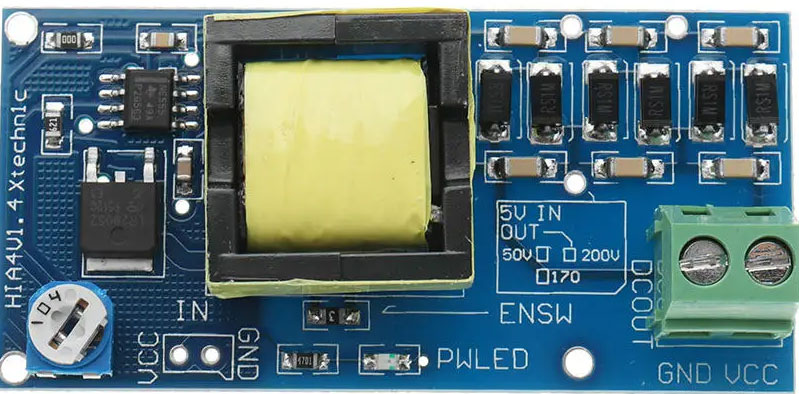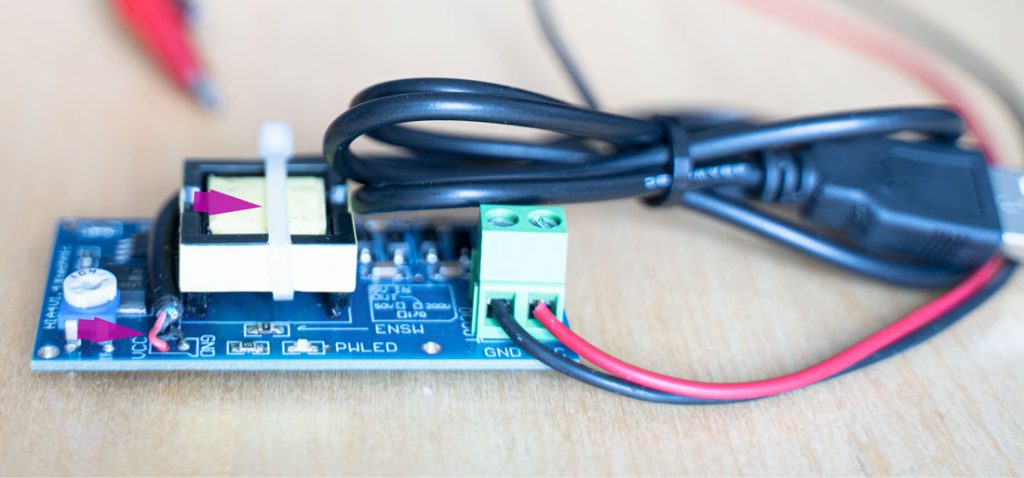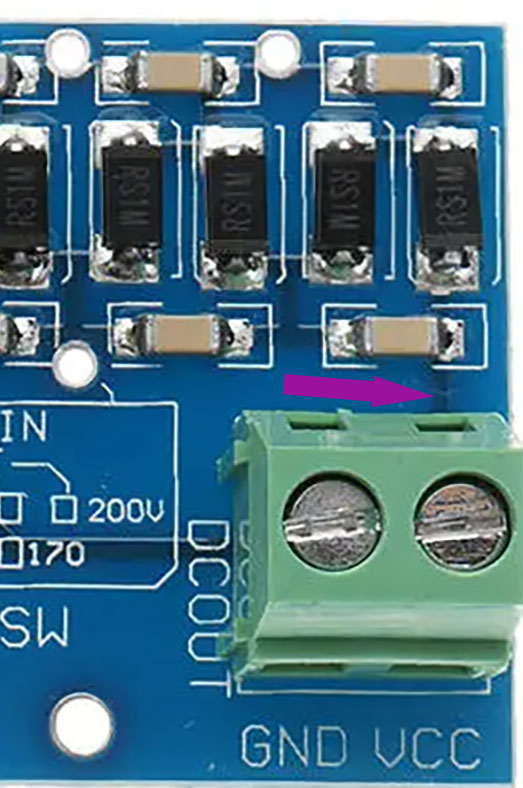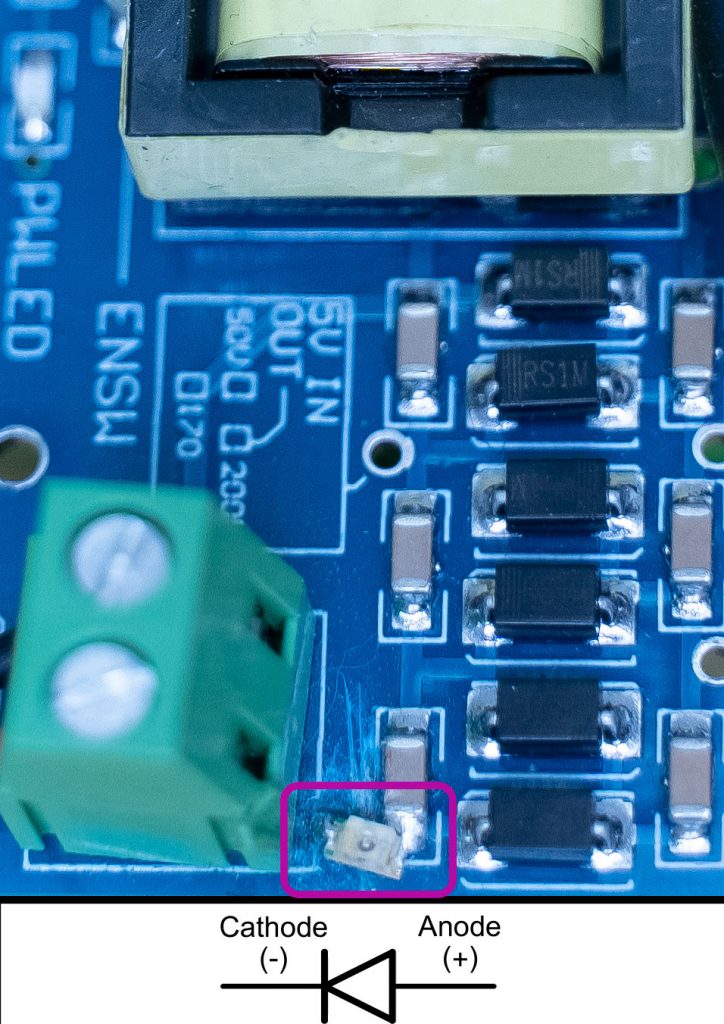Were there a lot of electronic toys from Asia under the Christmas tree?
We all like to buy electronic gadgets from Asia from time to time.
But are the devices safe? Hasn’t insulation been skimped on for the outrageously low price?
One of the biggest risks is faulty insulation of the primary and secondary sides. In this case, mains voltage (110V or 240V) may be touched accidently.
Very few devices need 110V or 240 volts AC for internal operation. Exceptions are your stove or the water boiler. Otherwise most commonly a DC voltage in the range of 5V to 48V is needed. For this purpose, a small transformer is usually built in.
It becomes dangerous if the 110V/240V are not sufficiently isolated. Standards like UL and CE are supposed to prevent this. As a buyer, it is difficult to verify whether the standards are met.
It’s time to be on the safe side and build a device to test it yourself at home.

We use the HIA4V1.4 board from Xtechnic as a basis. This board can boost 5V input voltage to 1200V!
Do *not* touch the output. The current is only a few milliamperes. 1200V are nevertheless unpleasant.
For the 5V at the input we take a normal USB cable. With this, the tester can be operated at any 5V USB power supply.
The only thing missing now is a way to determine if there is current at the output (in which case the insulation is faulty and the device you are testing should be discarded immediately).
In this case, we solve it quite simply with a small diode. This requires a little skill with the soldering iron.
Here are the necessary steps:
(1) Use a wire cutter to remove the connector of a standard USB cable. Solder the red wire to VCC and the black wire to GND.
(2) If you want to can use a small cable tie as a strain relieve

This is optional (but if gives you a direct visual feedback if there is a short that should not be there)
(3) Cut the marked track with a razor blade or something similar. Use a multimeter to verify the track is disconnected.

(4) Solder a SMD LED between the cut track

You are done. Now you can use your test assembly with a standard USB power outlet to test the insulation of any device you want. If the LED lights up you know there is something wrong.
(To test the LED just short circuit the output)
Ressources
Datasheet Mosfet: IRLR_U2905Z.pmd (irf.com)